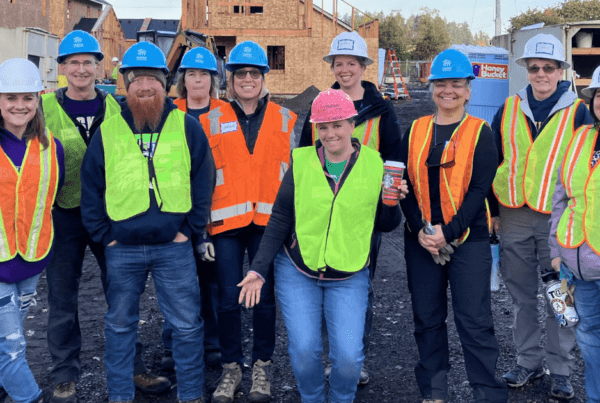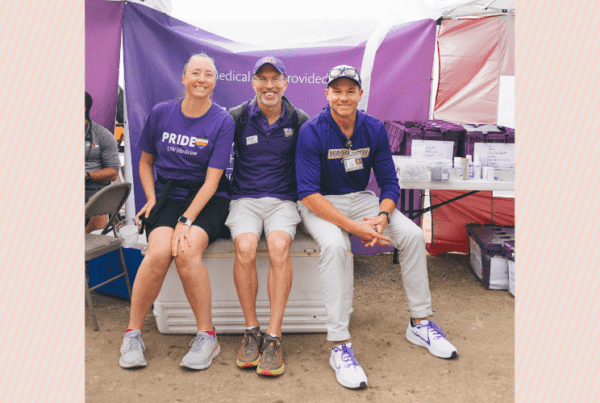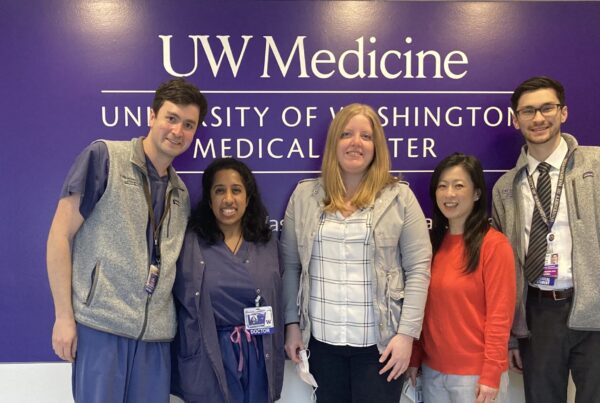HIGHLIGHTS | Making COVID-19 vaccines more accessible
- The mobile vaccination program provides vaccinations to underserved communities in King County.
- Over 14,700 vaccine doses were delivered within the first year of the program.
- The program is a team effort made possible by providers in the UW Medicine community and community partners.
At the start of the second year in the pandemic, providers and staff at UW Medicine noticed the inequities associated with vaccine access. Whether someone couldn’t get the vaccine due to the inability to travel to the mass vaccination sites or the distrust of people within the medical system, the launch of the COVID-19 mobile vaccination program helped UW Medicine meet people where they are.
What is the mobile vaccination program?
In February of 2021, the mobile vaccination program was launched to deliver vaccinations to underserved communities within King County. As of their anniversary on Feb. 26, 2022, they have visited over 110 sites.
“The goal of the mobile vaccination program is to provide vaccinations to people who belong to populations or live in areas that are typically underserved,” says Julia Ruud, internal consultant at Harborview Medical Center. “We determined which areas to focus on by looking at the rates of COVID-19, the mortality rates, and then looked to see which areas had the highest rates of COVID-19 and the lowest vaccination rate.”
The research showed these areas to be primarily in south King County, where there are many residents who may not speak English, trust the medical system or have access to travel to vaccination sites.
The mobile vaccination program made smart, intentional decisions on how to deliver the vaccines to these populations by partnering with community organizations to build trust with the residents.
While the program only operates in King County, they won’t turn people away who may come from neighboring counties.
The community impacts of the mobile vaccination program
As the mobile vaccination team looked at the demographics, they continued to use the evolving data around diagnosis, vaccination and mortality rates to guide the success of the program. Understanding the communities and their needs gave the program the ability to focus on these underserved communities, pivot when needed and make sure they were reaching those with the highest infection or mortality rate and lowest vaccination rate.
With the recent anniversary, the team has learned a lot on how to best partner with communities to serve the residents.
“The main takeaway that the team saw was that it’s important to build the relationships and partnerships within the community, but let the community organizations be the leading voice,” Ruud said. “They can let us know what the community needs, how to deliver services and how to move beyond our typical hospital-based mindset to see what’s truly needed for this population.”
The mobile vaccination program partnered with community organizations such as Casa Latina, Pacific Islander Community Association and many other non-profit organizations around King County. In the first year of service, the mobile vaccination program delivered more than 14,700 vaccines doses to people within these communities, with the increased focus on accessibility. The community partners worked to spread the word of the mobile vaccination program, build trust with the community around vaccines and healthcare workers, and set up pop-up, no-appointment vaccine clinics in public spaces such as grocery stores, parks, retail stores, malls and more.
The team effort of the mobile vaccination program
The mobile vaccination program has been successful because of the team behind the operation.
All current and former team members of the mobile vaccination team, the community partners who hosted the team and conducted outreach to the populations they serve, the Harborview pharmacy team and nurse manager Jennifer Hernandez were responsible for the great impact made in vaccination rates in King County.
Thanks to the mobile vaccine clinic, thousands of King County residents have received the COVID-19 vaccine, 29% of whom were limited English proficiency and 67% were non-white community members. The program is helping to slow the spread of COVID-19, and most importantly, protect the community.
Photo Caption: © David Ryder for Viewpoint Magazine


